There and Back Again There and Back Again Lyrics
Featured prototype credit: Rocket Lab
Check out our Post Launch Review for the latest info on this mission.
Elevator Off Fourth dimension | May 02, 2022 – 22:49 UTC May 03, 2022 – 10:49 NZT |
|---|---|
Mission Name | In that location and Back Again , a commercial rideshare mission |
Launch Provider | Rocket Lab |
Customer | Alba Orbital, Astrix Astronautics, Aurora Propulsion Technologies, E-Space, Unseenlabs, and Swarm Technologies |
Rocket | Electron |
Launch Location | Launch Complex-1A, Māhia Peninsula, New Zealand |
Payload mass | TBD |
Where are the satellites going? | 520 km Lord's day-Synchronous orbit |
Will they be attempting to recover the outset phase? | Yes, it volition be their start endeavour of mid-air helicopter capture of the Electron rocke t! |
Where will the offset stage land? | It volition be captured mid-air by a Sikorsky S-92 helicopt er |
Will they exist attempting to recover the fairings? | No |
Are these fairings new? | Yeah |
How's the weather looking? | TBD |
This will be the: | – 1st time that a helicopter will catch Electron'south booster mid-air – 1st at-sea offload of the booster (a helicopter volition offload Electron's booster onto the recovery vessel after the mid-air capture) – 3rd Rocket Lab launch of 2022 – 26th Electron launch – 48th orbital launch endeavor of 2022 |
Where to lookout | Official livestream Tim Dodd, the Everyday Astronaut, will be streaming at T-30 minutes; come ask questions and join the conversation live! |
What Does All This Mean?
Rocket Lab is preparing for its There and Back Once again mission that will launch from Launch Circuitous-1A, Māhia Peninsula, New Zealand. On the There and Back Again mission, Electron volition carry 34 payloads for commercial operators Alba Orbital, Astrix Astronautics, Aurora Propulsion Technologies, E-Space, Unseenlabs, and Swarm Technologies via global launch services provider Spaceflight Inc. Moreover, this mission will marker the first try of a mid-air helicopter capture of the Electron launch vehicle as it returns to Earth from space and the first endeavour of an at-sea offload of the booster to the recovery vessel later the mid-air capture.

There And Back Again Mission
Payload
There and Back Once more is a commercial rideshare mission that will carry 34 satellites bringing the total number of satellites launched by Rocket Lab to 146. A list of the providers include Alba Orbital, Astrix Astronautics, Aurora Propulsion Technologies, E-Space, Unseenlabs, and Swarm Technologies.
Alba Orbital
Alba Orbital is a Scottish launch broker and a manufacturer of PocketQubes, a type of miniaturized satellites with a size of 5 × 5 × v cm and a mass of no more 250 grams. On the There and Back Over again mission, Electron will carry four pico-satellites that include Alba Orbital's own Unicorn-2 PocketQube satellite, as well as the TRSI-2, TRSI-three, and MyRadar-1 satellites for Alba Orbital's customers. The Unicorn-2 was developed by the company in collaboration with the European Infinite Agency (ESA) and has performance equivalent to that of a 3U cubesat.

All four satellites volition be deployed to a 500 km round orbit by Electron'due south Kick Stage. Their master goal is to demonstrate innovative radio and dark-time Earth observation technologies. More particularly, the Unicorn-2 platform features a payload that will perform optical nighttime-time imaging to monitor light pollution across the globe.
Astrix Astronautics
Astrix Astronautics is a immature New Zealand start-up formed by University of Auckland science and engineering students (chief executive Fia Jones, Will Hunter, and Max Daniels). Peter Brook is a board observer of the company. Astrix Astronautics is developing loftier ability systems to provide uncomplicated and reliable deployment of small satellites. They use a new inflatable engineering to create a lightweight but powerful generation device with 300W/kg for small satellites.
On this mission, Astrix Astronautics will test their Copia power generation arrangement for CubeSats and will demonstrate its high operation in space. This system features 1U solar arrays that are able to capture up to 200W.
Aurora Propulsion Technologies
Aurora Propulsion Technologies is a Finnish company that develops thrusters and de-orbiting modules for small satellites to ensure sustainable use of space. This time, Electron will deliver their AuroraSat-ane into low Globe orbit. The AuroraSat-one is a one.5U CubeSat that has ARM-A and APB modules every bit principal payloads.
ARM-A
ARM-A (Aurora Resistojet Module) is a arrangement that gives a spacecraft propulsion-based mobility control. The AuroraSat-i features a small version of this module that consists of half-dozen resistojet thrusters. The system uses a h2o-based propellant with a freezing point beneath -x °C.
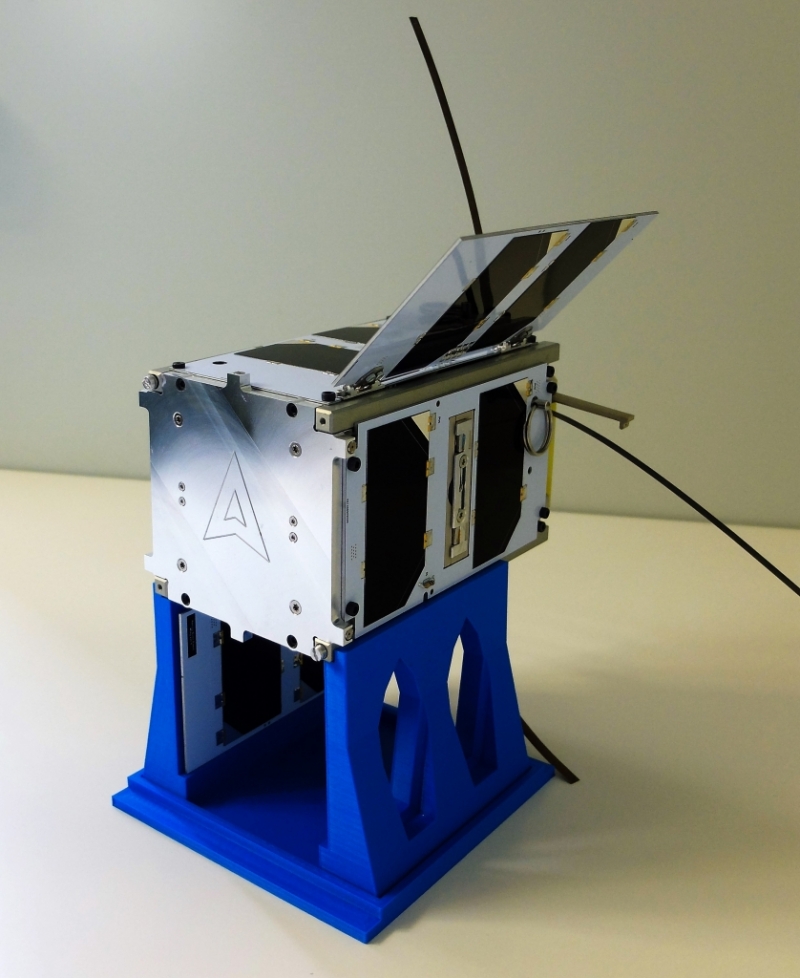
APB
APB (Aurora Plasma Restriction) is a new deorbiting device that does not need any propellant, instead, it uses the interaction of charged particles in space and a micro-tether to provide strong Coulomb drag and deorbit the spacecraft. The AuroraSat-1 has a twin APB that volition be tested on this mission.
E-Space
E-Space is a Rwanda-backed mega-constellation startup that aims to "increase the speed for constellation delivery from years to months". The There and Back Again mission will bring three demo satellites into orbit to demonstrate and validate the platform for East-Space's new sustainable satellite system. According to CEO Greg Wyler, their satellites have significantly smaller cross-sections than those in other mega-constellations. This volition help to decrease the risk of in-orbit collisions. Moreover, these satellites will automatically deorbit in instance any systems malfunction. In a long term, the satellites will be able to capture small debris from space and deorbit them to burn up on re-entry.
Unseenlabs
The French company, Unseenlabs, will be launching their BRO-six satellite (6U). With an end goal of a 20 satellite constellation, the BRO (Breizh Recon Orbiter) satellites are being dedicated to maritime surveillance, which volition facilitate in stopping illegal fishing and environmentally unfriendly beliefs. It will besides help in the geolocation of sea vessels.
Swarm Technologies
Ii stacks of SpaceBEEs will be deployed on this mission for Internet-of-Things (IoT) constellation operator, Swarm Technologies through Spaceflight Inc. The 1/4U IoT satellites will help provide affordable internet in hard to accomplish parts of the world that do non yet have access to it. Because these satellites are so light and small, this allows more than money to be put into getting that reliable internet since they are of such a low cost to make and launch. Industries that might capitalize on the SpaceBEE constellation include ground transportation, maritime aircraft, and agriculture.

Rocket Lab'southward Recovery Program
The company has revealed its plans for the recovery program in 2019. The global aim of this program is to safely recover and re-wing Electron's first stage. This would allow the company to increase launch cadence even farther past reducing production time spent to build new kickoff stages from scratch.
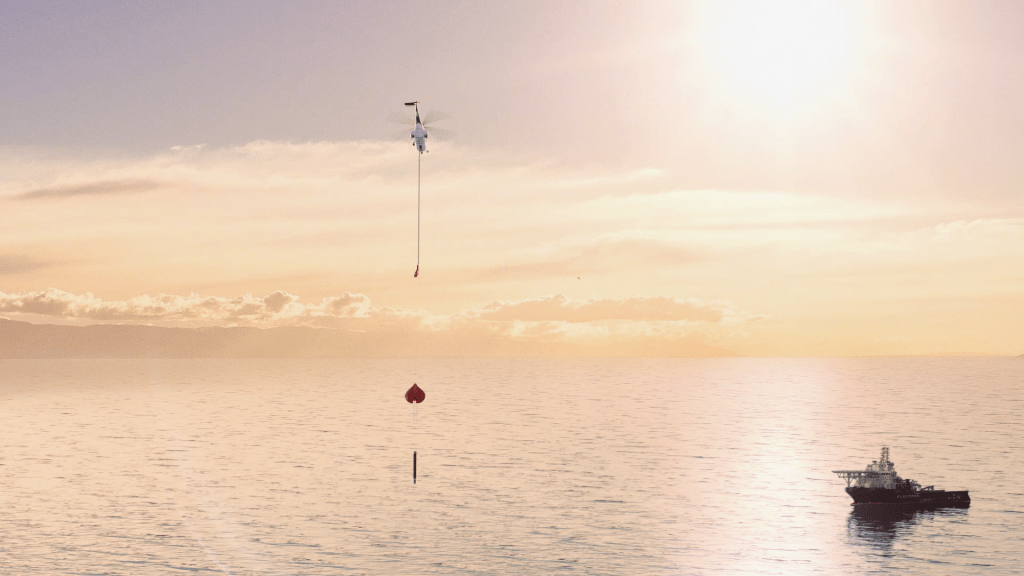
Rocket Lab's recovery program is divided into two phases. The first one consisted of three body of water splashdown recovery missions (16th, 20th, and 22nd missions), where a total Electron first phase was recovered from the h2o and shipped back to the production complex for closer inspection. On these flights, Rocket Lab gathered the necessary data needed for understanding the recovery process and introducing updates to the vehicle's design. For example, the previous Love At The Commencement Insight mission featured an avant-garde parachute, improvements to the heat shield, and added thermal protection system. Check out their demo video that illustrates all steps of the recovery program!
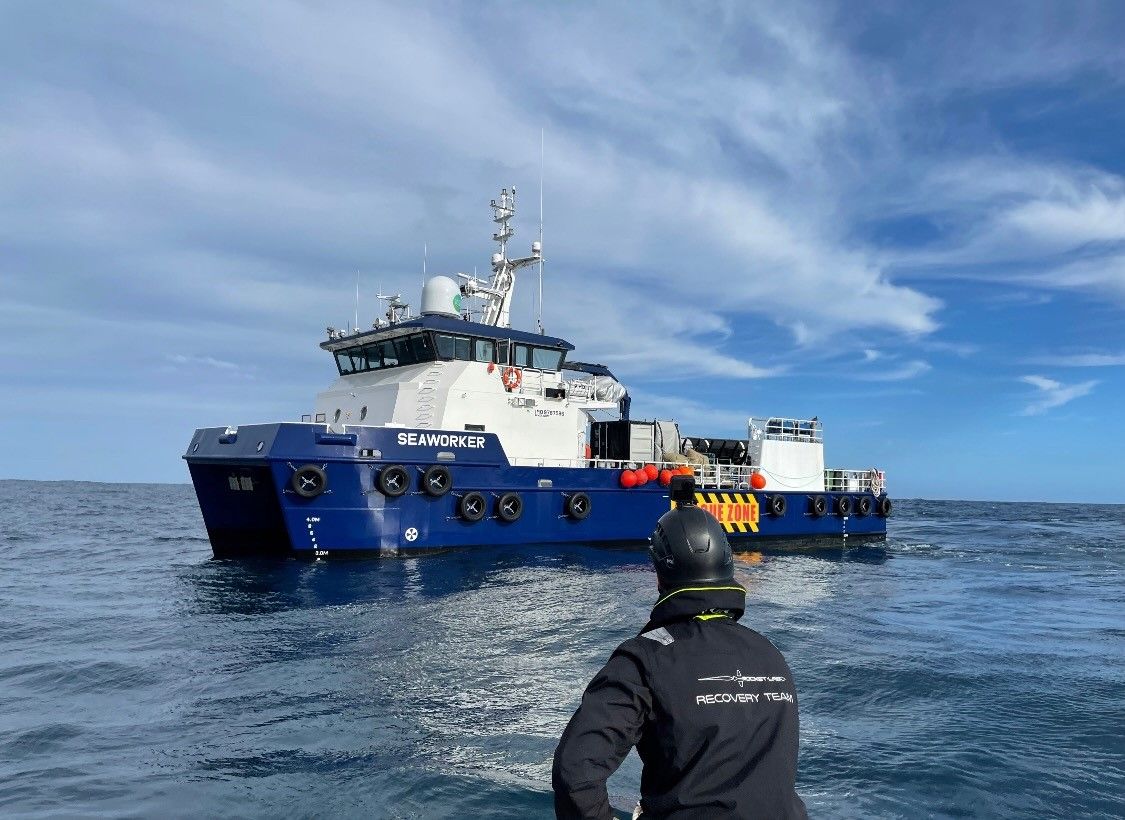
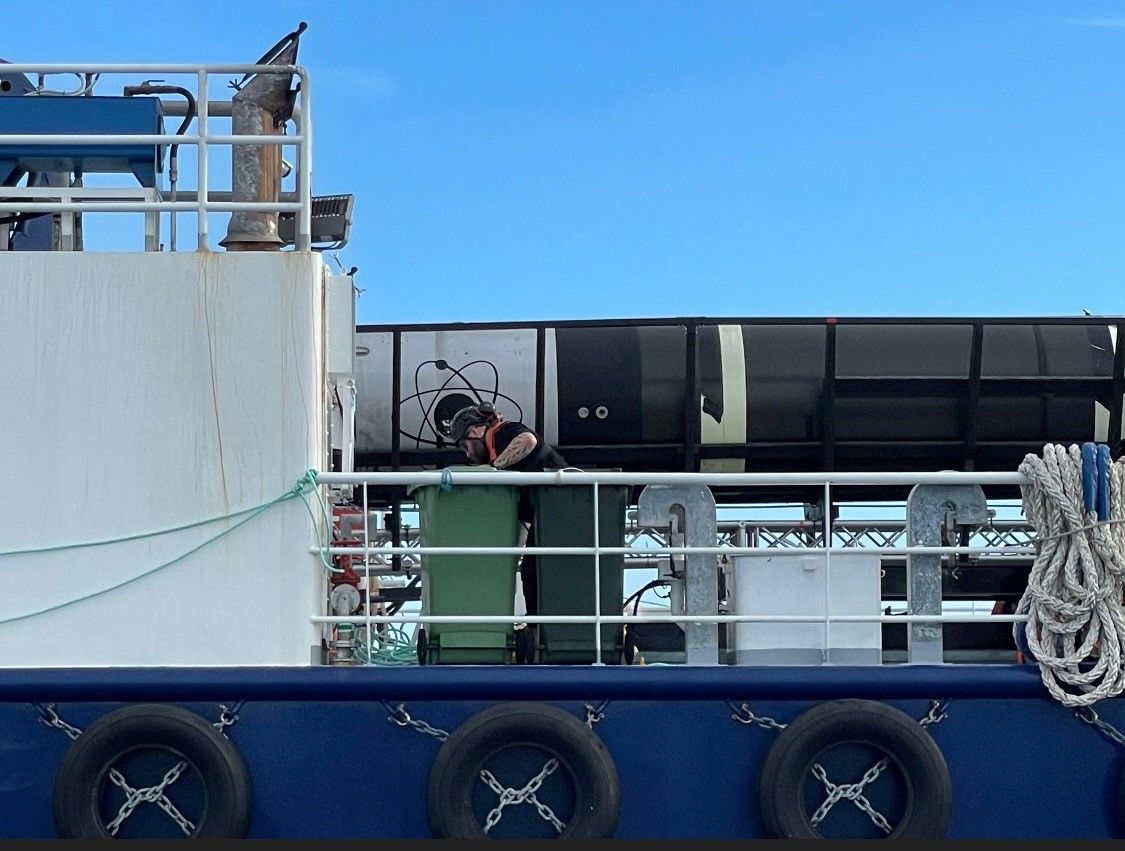
Recovery Tests
The Love At The First Insight mission had concluded the first phase of the recovery plan and for the first fourth dimension included a helicopter in the recovery process past observing Electron'south descent. Even before that, Rocket Lab performed many successful helicopter captures with replica stages.
In 2020, the company released a video of one of their successful attempts conducted in New Zealand. During this test, an Airbus AS350 helicopter carried a replica stage at the finish of a long line and released it over the open ocean, which caused its parachute to deploy. A second helicopter (Bong 429) then came into play and caught the parachute's drogue line past its capture mechanism attached to the end of a long line.

However, for the In that location and Dorsum Again mission, a customized Sikorsky S-92 helicopter will be used. This large twin engine helicopter is unremarkably used for search and rescue operations, as well every bit for offshore gas and oil transportation. Check out i of their capture tests with this helicopter here.
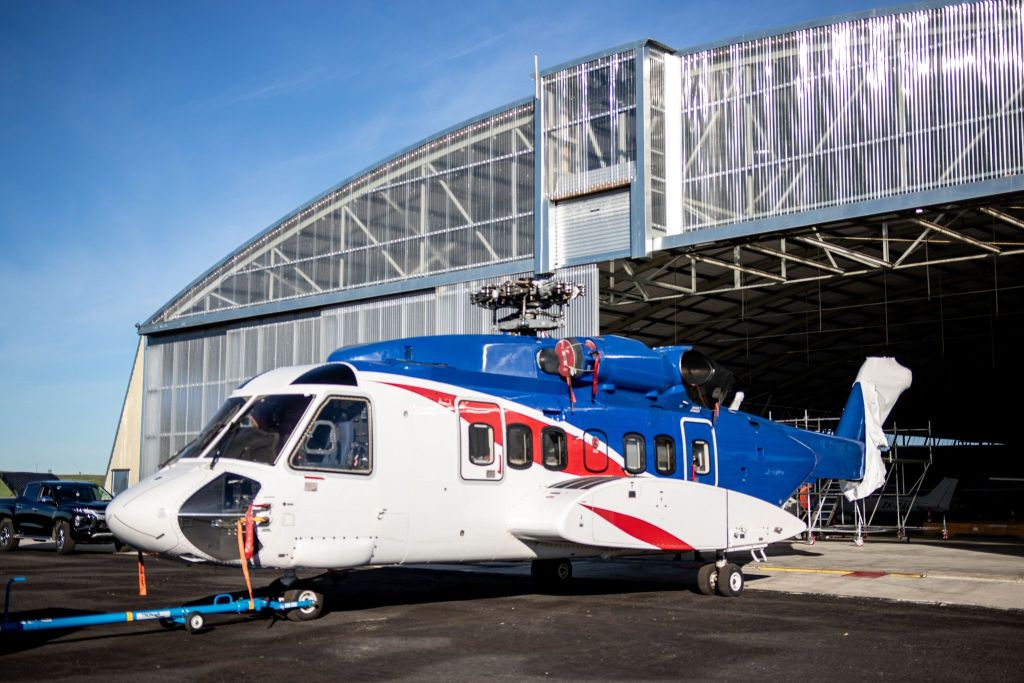
Some characteristics of this helicopter are given in the table below.
| Range | 950 km |
| Pinnacle Speed | 306 km/h |
| Length | 20.8 yard |
| Summit | 5.47 m |
| Weight | seven,070 kg |
| Max Takeoff Weight | 12,837 kg |
| Turboshaft Engines | two |
| Engine Power (each) | 1,879 kW |
Recovery Mission Profile
An hr prior to liftoff, Sikorsky S-92 will move in the capture zone (~ 288 km off New Zealand's coast) to look launch. This mission'southward recovery process volition go as follows. Beginning, the reaction control organization volition reorient the booster 180° for re-entry. This orientation, as well as the heat shield, will help the vehicle withstand temperatures up to 2400 °C as it re-enters Earth's atmosphere at hypersonic speeds (8,300 km per hour, ~8 times the speed of sound). After decelerating to supersonic speeds (< Mach 2), Electron volition deploy a drogue parachute at 13 km altitude that will stabilize the stage and continue slowing it down. Then, the main parachute will come into play at an altitude of around 6 km to increment drag even further, to 36 km per hour.
After that, a helicopter stationed in the recovery zone will exist deployed and will attempt to rendezvous with the returning booster and grab its parachute line via a claw. Then, the helicopter volition unload the booster onto the recovery vessel, which volition mark the first attempt of an at-ocean offload of the company. The recovered stage volition so be returned to land for thorough inspection.
Timeline
Pre-Launch
| Hrs:Min:Sec From Lift-Off | Events |
| – 04:00:00 | Road to the launch site is closed |
| – 04:00:00 | Electron is raised vertical, fueling begins |
| – 02:xxx:00 | Launch pad is cleared |
| – 02:00:00 | LOx load begins |
| – 02:00:00 | Safety zones are activated for designated marine infinite |
| – 00:thirty:00 | Condom zones are activated for designated airspace |
| – 00:18:00 | GO/NO Go poll |
| – 00:02:00 | Launch automobile sequence begins |
Launch
| Hrs:Min:Sec From Lift-Off | Events (Recovery Events Are In Orangish) |
| – 00:00:02 | Rutherford engine ignition |
| 00:00:00 | Lift-Off |
| + 00:02:27 | Main Engine Cut-Off (MECO) on Electron's starting time stage |
| + 00:02:32 | Stage one separation |
| + 00:02:36 | Stage ii Rutherford engine ignition |
| + 00:03:06 | Fairing separation |
| + 00:04:36 | Phase 1 apogee |
| + 00:07:26 | Battery jettison |
| + 00:07:29 | Stage i Drogue parachute deploys |
| + 00:08:12 | Stage 1 master parachute deploys |
| + 00:ten:15 | Electron reaches orbit |
| + 00:x:19 | Stage 2 engine cut-off |
| + 00:x:23 | Stage 2 separation from Boot Stage |
| + 00:xviii:21 | Stage 1 captured |
| + 00:57:43 | Kicking Phase Curie engine ignition |
| + 00:59:11 | Curie engine cut-off |
| ~+ 01:00:00 | All payloads deployed |
What Is Electron?
Rocket Lab's Electron is a small-lift launch vehicle designed and adult specifically to place small satellites (CubeSats, nano-, micro-, and mini satellites) into LEO and Lord's day-synchronous orbits (SSO). Electron consists of two stages with optional third stages.
Electron is virtually 18.5 meters (60.vii feet) in height and but ane.2 meters (3.9 feet) in bore. Information technology is not only pocket-sized in size, but also light-weighted. The vehicle structures are fabricated of avant-garde carbon fiber composites, which yields an enhanced performance of the rocket. Electron's payload elevator capacity to LEO is 300 kg (~660 lb).

The maiden flight Information technology's A Test was launched on May 25, 2017, from Rocket Lab'due south Launch Complex-1 (LC-1) in New Zealand. On this mission, a failure in the footing communication arrangement occurred, which resulted in the loss of telemetry. Even though the company had to manually cease the flight, there was no larger issue with the vehicle itself. Since and so, Electron has flown a total of 25 times (22 of them were fully successful) and delivered 112 satellites into orbit.
Start And Second Stage
| First Stage | Second Stage | |
|---|---|---|
| Engine | 9 Rutherford engines | ane vacuum optimized Rutherford engine |
| Thrust Per Engine | 24 kN (5,600 Ibf) | 25.eight kN (5,800 Ibf) |
| Specific Impulse (ISP) | 311 s | 343 due south |
Electron'south starting time stage is equanimous of linerless common bulkhead tanks for propellant, and an interstage, and powered by 9 bounding main-level Rutherford engines. The second stage too consists of tanks for propellant (~two,000 kg of propellant) and is powered by a unmarried vacuum optimized Rutherford engine. The master deviation betwixt these two variations of the Rutherford engine is that the latter has an expanded nozzle that results in improved performance in nearly-vacuum weather.
For theDearest At Beginning Insight mission, the company introduced an update to the second stage past stretching it by 0.5 thousand. Moreover, they flew an Autonomous Flying Termination Arrangement (AFTS) for the first time.
Rutherford Engine
Rutherford engines are the chief propulsion source for Electron and were designed in-house, specifically for this vehicle. They are running on rocket-grade kerosene (RP-ane) and liquid oxygen (LOx). At that place are at least two things about the Rutherford engine that make it stand out.

Firstly, all master components of Rutherford engines are 3D printed. Primary propellant valves, injector pumps, and engine sleeping room are all produced past electron axle melting (EBM), which is 1 of the variations of 3D printing. This manufacturing method is cost-effective and time-efficient, as information technology allows to fabricate a total engine in but 24 hours.
Rutherford is the first RP-1/LOx engine that uses electric motors and loftier-performance lithium polymer batteries to power its propellant pumps. These pumps are crucial components of the engine equally they feed the propellants into the combustion chamber, where they ignite and produce thrust. Nonetheless, the process of transporting liquid fuel and oxidizer into the chamber is non trivial. In a typical gas generator bike engine, it requires additional fuel and circuitous turbomachinery just to drive those pumps. Rocket Lab decided to use battery technology instead, which allowed eliminating a lot of extra hardware without compromising the performance.
Dissimilar Third Stages
Kick Stage
Electron has optional third stages, also known as the Boot Phase, Photon, and deep-space version of Photon. The Kick Phase is powered past a single Curie engine that can produce 120 N of thrust. Like Rutherford, it was designed in-house and is made by 3D press. Apart from the engine, the Kick Stage consists of carbon composite tanks for propellant storage and half dozen reaction command thrusters.
The Boot Phase in its standard configuration serves as in-space propulsion to deploy Rocket Lab'south customers' payloads to their designated orbits. Information technology has re-light capability, which means that the engine can re-ignite several times to send multiple payloads into dissimilar individual orbits. 1 case includes Electron 19th mission, They Go Up So Fast, launched in March before this year. The Curie engine was ignited to circularize the orbit, before deploying a payload to 550 km. Curie then re-lighted to lower the distance to 450 km, and the remaining payloads were successfully deployed.
Photon And Deep-Space Photon
Rocket Lab offers an advanced configuration of the Kick Stage, its Photon satellite bus. Photon can adjust various payloads and part as a separate operational spacecraft supporting long-term missions. Among the features that it tin provide to satellites are power, avionics, propulsion, and communications.
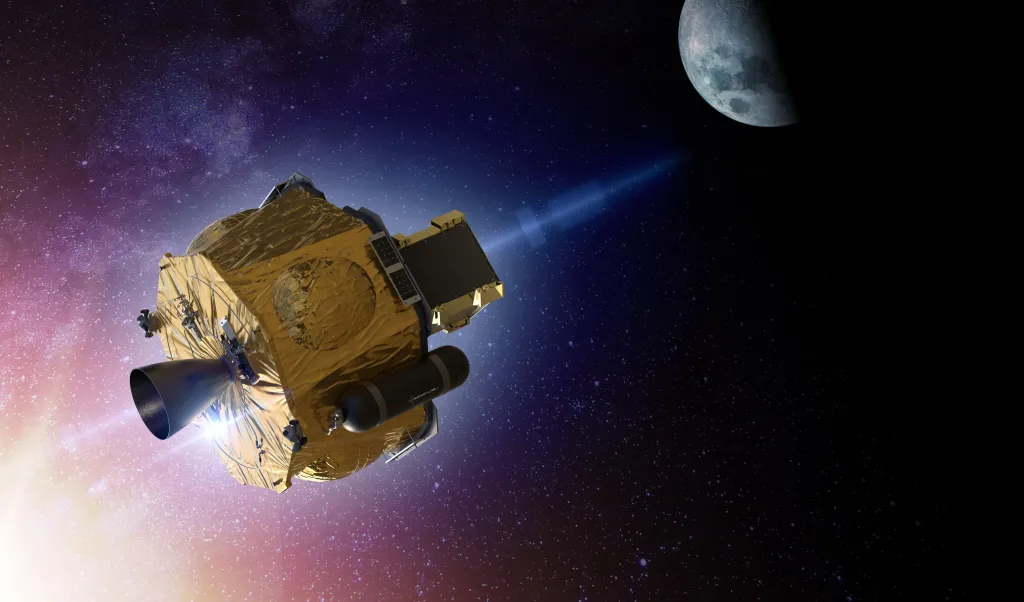
But in that location is more to it. Photon also comes as a deep-infinite version that will carry interplanetary missions. Information technology is powered by a HyperCurie engine, an evolution of the Curie engine. The HyperCurie engine is electric pump-fed, so it tin utilize solar cells to charge upward the batteries in between burns. It has an extended nozzle to be more efficient than the standard Curie, and runs on some "light-green hypergolic fuel" that Rocket Lab has not yet disclosed. NASA already plans to apply the deep-infinite version of Photon for its robotic Moon mission CAPSTONE. On this mission, the Photon spacecraft will deliver NASA's 25 kg CubeSat into a unique lunar orbit, formally known equally a near rectilinear halo orbit (NRHO). You lot can read more about CAPSTONE here.
Source: https://everydayastronaut.com/there-and-back-again-electron/
Belum ada Komentar untuk "There and Back Again There and Back Again Lyrics"
Posting Komentar